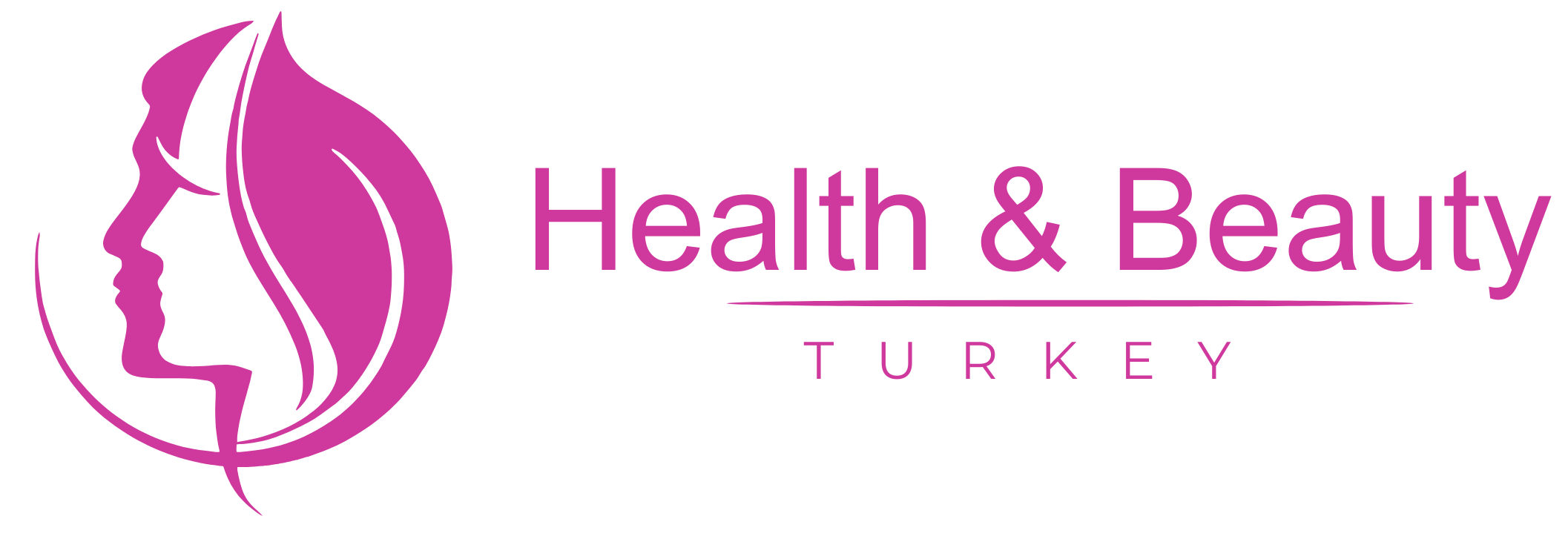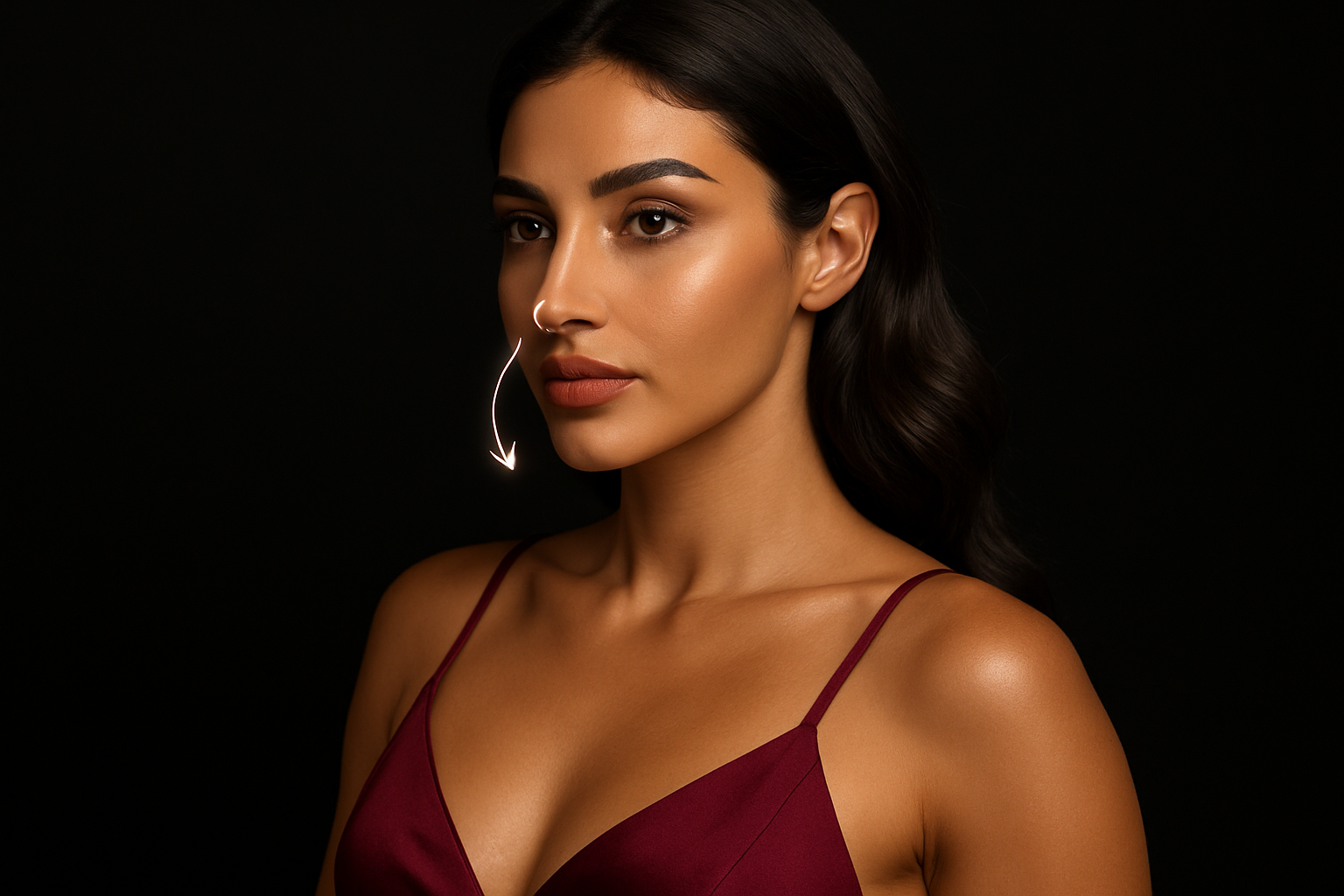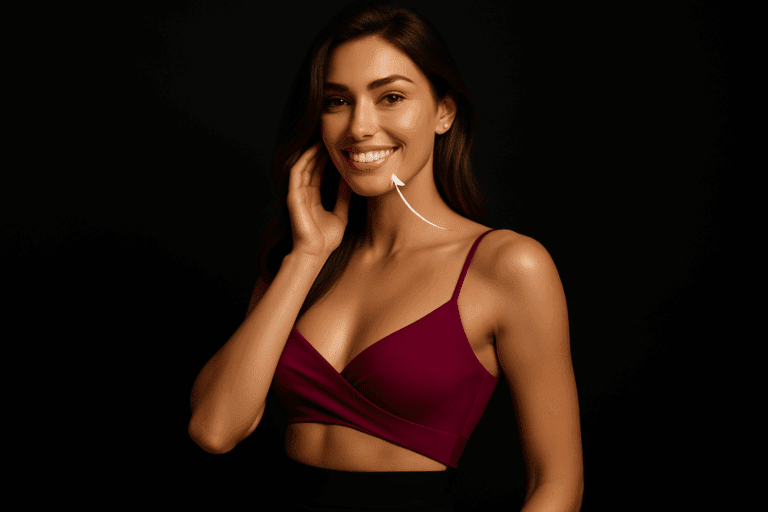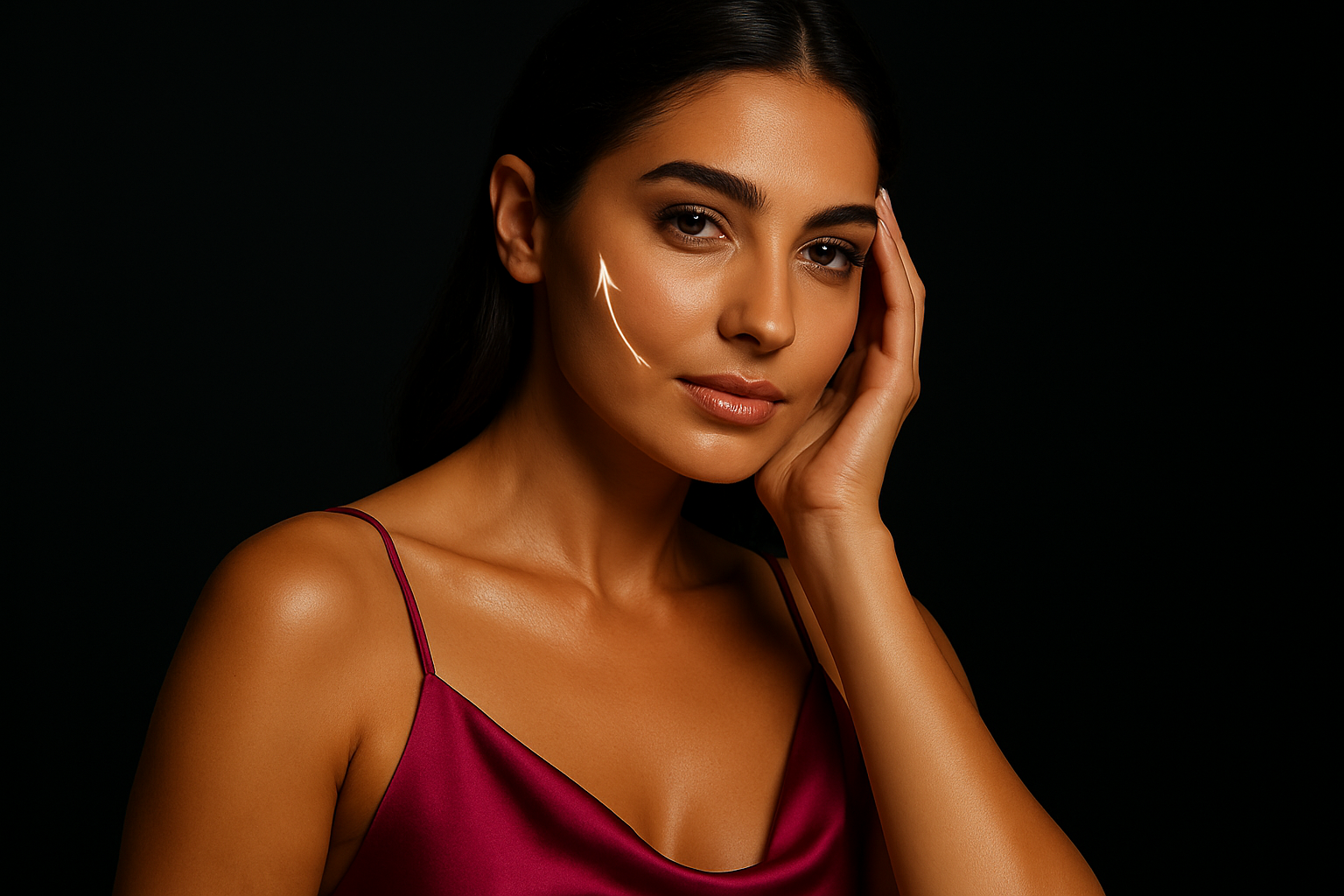Introduction
Rhinoplasty, also known as nose surgery or “Rhinoplasty”, is one of the most common cosmetic procedures in the world, with Turkey leading as a premier destination for these operations. The pursuit of the perfect nose is no longer just an aesthetic desire, but is often linked to improving respiratory functions, correcting congenital deformities, or addressing injuries. At “Health & Beauty Turkey”, we fully understand that each patient has a unique story and that understanding the types of rhinoplasty procedures according to the reason for the problem and the purpose of treatment is the first step towards achieving the desired results.
Many patients feel anxious about medical procedures, especially those that require surgical intervention. We assure you at “Health & Beauty Turkey” that your peace of mind and safety are our utmost priority. That is why we offer you “Medical Tourism Complications Insurance”, which covers hospital treatment for up to six months, including travel and accommodation expenses in case a revision surgery is needed, in clinics approved by the Turkish Ministry of Health. This insurance enhances your confidence in the quality of care we provide and underscores our commitment to offering a safe and comprehensive treatment experience.
Understanding the Reasons and Motivations Behind Rhinoplasty: An In-Depth Medical Perspective
Before diving into the types of procedures, it is essential to understand the underlying reasons individuals seek rhinoplasty. These reasons often fall into main categories:
Pure Aesthetic Reasons:
- Reducing a large nose: Decreasing the size of the nose to be more proportionate to other facial features.
- Lifting or lowering the nasal tip: Adjusting the angle of the nose with the upper lip or changing the shape of the tip to appear more rounded or defined.
- Removing the nasal hump (Osteotomy): Correcting an undesired bony protrusion on the bridge of the nose.
- Narrowing a wide nose: Making the width of the external nostrils more consistent.
- Correcting asymmetry: Addressing a crooked or tilted nose.
- Improving the nose shape after previous surgeries: Reshaping the nose after a previous rhinoplasty that did not achieve the desired results.
Functional Reasons (Improving Breathing):
- Correcting a deviated septum: The septum is the wall that separates the two nostrils. When it is significantly bent, it can obstruct airflow and cause difficulty breathing, especially through one nostril.
- Expanding the nasal valves: The nasal valve is the narrowest part of the upper airway of the nose and may be weak or narrow congenitally or due to injury, leading to nasal blockage.
- Treating hypertrophy of the nasal turbinates: Turbinates are bony structures covered with mucous membranes inside the nose that help moisturize and warm the air. Their enlargement can block the airway.
Reconstructive Reasons (After Injuries or Deformities):
- Repairing a broken nose: Reconstructing the nose after a fracture or trauma.
- Correcting congenital deformities: Addressing congenital defects like cleft lip and palate, where the nose shape is often affected.
- Reconstructing the nose after tumor removal: In rare cases, part of the nose may need to be removed due to a tumor, highlighting the importance of reconstructive surgery.
Reasons and Risk Factors for Some Nasal Problems:
- Congenital deformities: Often genetic or occur during fetal development.
- Injuries and traumas: Car accidents, violent sports, physical assaults.
- Chronic sinusitis: Can affect the structure and functions of the nose.
- Age progression: The shape of the nose may change over time, or breathing problems may worsen.
Common Symptoms Leading Patients to Seek Treatment:
- Difficulties breathing through one or both nostrils.
- Excessive snoring or sleep apnea.
- Frequent sinus infections.
- Frequent nosebleeds.
- Feeling of dryness or persistent irritation in the nose.
- Pain or pressure in the nose and facial area.
- Dissatisfaction with the overall shape of the nose (small, large, crooked, hump, droopy tip).
Diagnosis: A Key Step Towards Optimal Treatment
Diagnosis is made through:
- Comprehensive clinical examination: The doctor assesses the external shape of the nose, measures its ratios with other facial features, and examines the inside of the nose using a rhinoscope.
- Medical imaging:
- X-rays: May be used to evaluate nasal fractures.
- CT Scan: Essential for assessing the structure of the sinuses, septum, and turbinates, and determining the extent of respiratory obstruction.
- MRI: May be used in rare cases to assess soft tissues or tumors.
- Respiratory function tests: To assess the efficiency of the nasal airways.
Latest Research Updates:
The field of rhinoplasty witnesses continuous developments. Recent research includes the use of 3D printing techniques for precise surgical planning, the use of advanced fillers for non-surgical procedures, and the development of minimally invasive surgical techniques to reduce recovery time. Researchers are also focusing on integrating both cosmetic and functional surgery to ensure the best aesthetic and functional results together.
Ideal Candidates for Rhinoplasty
Before making a decision about rhinoplasty, our expert physician conducts a thorough evaluation of each case. Generally, the ideal candidate is:
- Individuals who have completed skeletal and facial growth: Usually by the late teenage years or early twenties.
- People who are in good overall health: Free from chronic diseases that may hinder the healing process.
- Individuals with realistic expectations: Understanding what can be achieved through surgery and not seeking absolute perfection.
- Patients with clear motivations: Whether aesthetic, functional, or reconstructive.
Who is advised against surgery?
- Individuals with uncontrolled blood coagulation disorders.
- Chronic smokers: It is advised to quit smoking weeks before surgery to ensure optimal healing.
- People with severe auto-immune diseases or uncontrolled serious medical conditions.
- Patients suffering from severe psychological disorders such as Body Dysmorphic Disorder.
- Children and adolescents who have not completed their growth.
Preparation before Traveling for Rhinoplasty in Turkey
Good preparation is the key to the success of the procedure and the comfort of the patient. At “Health & Beauty Turkey”, we assist you every step of the way:
- Initial Consultation: Conducted remotely with our medical team, where you provide photos of your nose and discuss your goals. Our doctor will evaluate your initial condition and provide advice.
- Medical Tests: Upon arrival in Turkey, comprehensive medical examinations will be conducted to ensure your health is suitable for surgery, including blood tests, EKGs, and other necessary exams.
- Lifestyle Adjustments:
- Quit smoking: You should stop smoking for at least a month before and after the surgery to improve blood flow and enhance healing.
- Avoid certain medications and supplements: You will be asked to avoid aspirin, ibuprofen, and some nutritional supplements that may increase bleeding risk.
- Healthy Nutrition: Maintaining a balanced diet rich in vitamins supports the healing process.
- Rest and Adequate Sleep: To ensure the body is ready for surgery.
Before the Surgery
Final Check-ups and Consultation: The doctor will conduct a thorough examination of the nose, including precise measurements, assessing skin elasticity, and outlining the new nose shape. Surgical techniques, potential risks, and expected outcomes will be discussed.
Photography: Clear photos of the face will be taken from different angles for comparison before and after the surgery, and to assist in planning the procedure.
Anesthesia Options:
- Local Anesthesia with Sedation: Often used in simple cosmetic procedures or some nose adjustments. The patient feels relaxed but remains aware.
- General Anesthesia: The most common option in rhinoplasty, ensuring complete patient comfort and no pain during the surgery. The specialized anesthesia team will monitor the patient’s condition throughout.
During the Surgery: Surgical and Non-Surgical Techniques
Surgical techniques for rhinoplasty vary based on the purpose of the procedure:
Open Rhinoplasty:
Description: This technique involves making a small and invisible incision in the area between the nostrils (the columella). This incision allows the doctor to lift the skin and soft tissues, providing a direct view of the bones and cartilage, enabling precise and complex adjustments.
Usage: Typically preferred in complex nose surgeries requiring correction of significant deformities, or extensive reconstructive procedures.
Closed Rhinoplasty:
Description: In this technique, all incisions are made inside the nostrils. There is no incision in the columella. This approach provides the advantage of no visible external scarring and may offer a slightly faster recovery time.
Usage: Suitable for cases requiring minor to moderate adjustments, such as removing the nasal hump or adjusting the overall size of the nose without extensive reconstruction.
Endoscopic Rhinoplasty:
Description: A thin endoscope with a small camera is used to perform the procedure through small incisions inside the nose. It provides a clear view of the internal areas and aids in sinus surgeries or correcting the septum.
Usage: Often used as part of functional cosmetic rhinoplasty, or for precise adjustments at the back of the nose.
Septoplasty Techniques:
Description: This surgery focuses on straightening the deviated septum. The mucosa is separated from the septum, and then the crooked bony and cartilaginous parts are adjusted or removed.
Usage: To open the nasal passages and improve breathing. Often combined with rhinoplasty (Rhinoseptoplasty).
Turbinate Reduction Surgery:
Description: Aims to reduce the size of enlarged turbinates that obstruct breathing. It can be performed using various techniques such as radiofrequency, laser, or direct surgical intervention.
Usage: To improve airflow through the nose.
Non-Surgical Rhinoplasty (Liquid Rhinoplasty):
Description: Injectable dermal fillers (such as hyaluronic acid) are used to temporarily modify the shape of the nose. They can be used to fill in gaps, hide small humps, or lift the nasal tip.
Usage: For candidates wishing for minor enhancements without surgery, or to test the new nose shape before committing to permanent surgery. Results are temporary and last for several months.
Important Note: This technique does not address breathing problems or significant deformities.
After the Surgery: Immediate Care and Next Steps
Immediate Recovery: After the procedure, the patient will be moved to the recovery room for monitoring vital signs. They might experience some swelling, bruising around the eyes, and nasal congestion.
External Splint and Dressings: A plastic or metal splint will be placed on the nose to protect and support it during the first few days. Dressings may be placed under the nose to absorb any discharge.
Medical Monitoring: Clear instructions will be provided for wound care, how to take medications (pain relievers, antibiotics), and what to avoid.
Returning Home: Typically, the patient can return to the hotel on the same day or the next day, depending on the complexity of the surgery and their health condition.
Recovery Period:
- The first few days (1-7 days): Swelling and bruising peak. You will be given nasal drops and saline solutions to keep the nasal passages clean. It is recommended to lie down with your head elevated.
- The second week: The external splint and stitches (if any) are removed. Swelling starts to noticeably decrease, and most bruises begin to fade. Most patients can return to work and light activities.
- The first month: Swelling continues to improve. Initial results begin to appear, but the final shape of the nose takes longer.
- Months (6-12 months): Most remaining swelling disappears, and the details of the nose become clearer. Some minor swelling in the tip area may remain, gradually fading.
- Final results: Final results can be fully appreciated after a year or more, as the skin and tissues adapt to the new shape.
Stages of Healing:
- Swelling and Bruising Stage: Continues from week one to two.
- Symmetry Stage: The nose shape starts to become clearer after the splint is removed.
- Maturity Stage: Fine swellings disappear and the final details of the nose are defined.
Restrictions During Recovery Period:
- Avoid strenuous physical activities and violent sports for 4-6 weeks.
- Avoid lifting heavy objects.
- Avoid wearing glasses that rest on the bridge of the nose (special adhesive strips can be used).
- Avoid direct sun exposure.
- Avoid blowing or rubbing the nose vigorously.
- Avoid swimming and diving.
Innovative Treatment Options in Turkey
Turkey is distinguished by its adoption of the latest techniques in rhinoplasty, thanks to a select group of specialized and internationally trained surgeons, equipped with the latest medical equipment.
- Laser-Assisted Rhinoplasty: Used in some cases to reduce swelling or modify the skin, but it is not a substitute for traditional surgery in most cases.
- Advanced Endoscopic Techniques: Allow for precise and minimally invasive procedures, especially when combined with sinus surgeries.
- Use of Advanced Cartilage Grafts: Surgeons use advanced techniques to harvest cartilage from other parts of the body (such as the septum, ear, or rib) to reconstruct or support specific parts of the nose.
- Robotics and Computer-Assisted Surgery: Some centers have begun using computer-assisted technologies for more accurate surgical planning.
Addressing Patient Concerns: Safety with “Medical Tourism Complications Insurance”
We acknowledge that contemplating any surgical procedure may raise concerns about potential complications. At “Health & Beauty Turkey”, we have taken exceptional measures to ensure your safety and security:
- Comprehensive Insurance: We offer “Medical Tourism Complications Insurance” that covers hospital treatment in the event of any complications requiring additional medical care.
- Coverage Duration: This insurance extends for up to six months post-surgery, giving you ample time to feel completely secure.
- Additional Coverage: In rare cases requiring revision surgery, the insurance covers necessary travel and accommodation costs.
- Commitment to Quality: This insurance is only available in clinics and hospitals accredited by the Turkish Ministry of Health, ensuring the highest levels of care and professionalism.
Practical Tips for Patients Traveling to Turkey
- Travel Planning: Book your flight tickets and accommodation early. Our team can assist you with travel arrangements.
- Psychological Readiness: Speak openly with your doctor about your expectations and concerns. Reading others’ experiences can be helpful, but remember that each case is unique.
- Recovery Period: Plan to stay in Turkey long enough to allow for initial medical follow-ups and suture removal, or at least until your doctor permits safe travel.
- Diet and Fluids: Drink plenty of water and avoid processed foods.
- Avoid Stress: Allocate time for rest and relaxation after the procedure.
Cost of Rhinoplasty in Turkey
The prices for rhinoplasty in Turkey vary greatly depending on several factors, including:
- The complexity of the case: Procedures correcting functional or reconstructive deviations may be more complex and require more time, affecting the cost.
- Surgical Technique: The cost of open surgery may differ from closed surgery.
- The surgeon’s experience and the reputation of the clinic/hospital.
- Costs of anesthesia, hospital stay, and medications.
- Costs of necessary tests and examinations before and after the procedure.
- Whether the procedure is purely cosmetic or includes functional corrections (like correcting the septum).
Overall, the prices for rhinoplasty in Turkey for this year range from €2500 to €5000. This average range often includes surgery costs, anesthesia, short hospital stay (if necessary), and initial follow-ups.
Important Note: These prices are estimates and may vary. When contacting “Health & Beauty Turkey”, we will provide you with a detailed assessment and accurate cost after consulting our doctor.
Why Trust “Health & Beauty Turkey”?
- Professionalism and Expertise: Highly trained and specialized doctors.
- Comprehensive Care: Everything you need for your medical journey in one place.
- Safety and Trust: International standards, commitment to providing the best care with additional insurance.
- Guaranteed Results: We strive to achieve natural and harmonious results that exceed your expectations.
Frequently Asked Questions
Q: When can I see the final results of my rhinoplasty?
A: The final results of rhinoplasty take time to fully manifest, as the swelling completely disappears and the tissues settle. Initial results can be seen after splint removal, but complete final results may take from 6 months to a year, and in some cases, up to two years.
Q: Is rhinoplasty painful?
A: Pain after rhinoplasty is usually mild and can be controlled with prescribed painkillers. The sensation of discomfort and congestion is the most common.
Q: How long should I stay in Turkey after rhinoplasty?
A: It is recommended to stay in Turkey for at least 7 to 10 days after the surgery. This period allows for initial follow-ups, suture removal (if any), and ensuring there are no complications before traveling.
Q: Can rhinoplasty be combined with other procedures?
A: Yes, rhinoplasty can often be combined with other procedures such as eyelid surgery (Blepharoplasty) or chin augmentation (Chin Augmentation) to achieve overall facial harmony. Your doctor will discuss these options with you.
Choosing Turkey for your rhinoplasty is your decision for receiving world-class medical care at competitive prices, while enjoying a unique travel experience. At “Health & Beauty Turkey”, we combine high medical expertise, cutting-edge technologies, and personal care to ensure that your medical journey is smooth, safe, and fruitful.
We understand that the size, shape, and function of the nose directly affect your self-confidence and overall well-being. Let our specialized team guide you through every step, from precise diagnosis to achieving the results you’ve always dreamed of.
Don’t hesitate to take the first step towards realizing your dream. Contact our medical team now via WhatsApp or email for a free consultation and a personalized evaluation of your case.
We are here to make your ideal face a reality.




